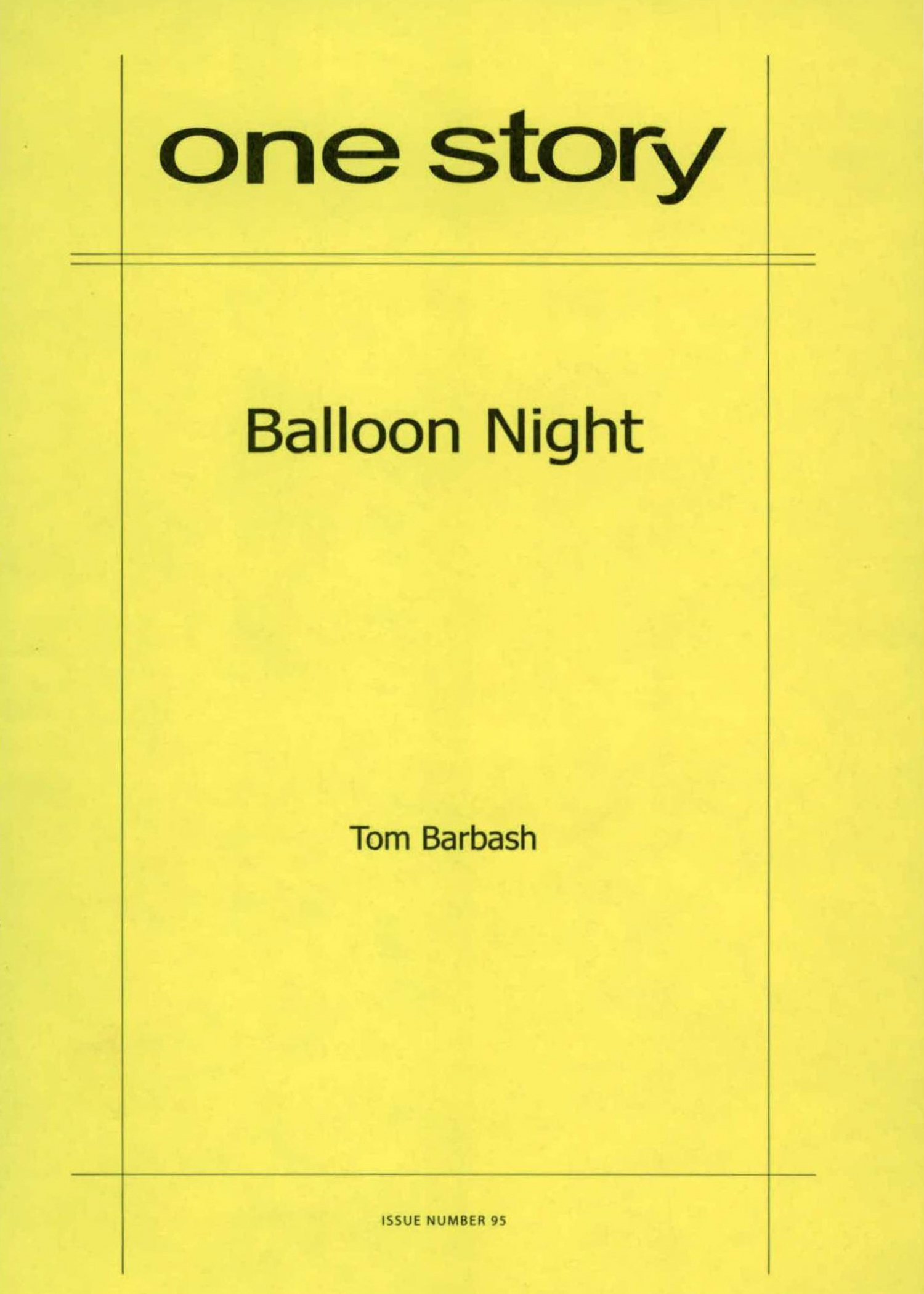
Balloon Night
$2.50
Sold out
Excerpt
Timkin’s wife left him on a blisteringly cold Thanksgiving week, two nights before their annual Balloon Night party. There was no time for Timkin to call their guests and cancel; nor would he know where to call in many cases. It was the sort of event attended by people from all corners of their lives, whether or not they could produce a fresh invite. Once invited always invited, he and Amy had said.
The Timkins had a three bedroom eighth floor apartment, on West 77th Street between Central Park West and Columbus, the balloon block. It was where those cloud-sized cartoon characters for the Macy’s Day Parade were inflated, the night before Thanksgiving, and nearly all the residents would open their apartment doors to anyone and everyone they knew. Timkin grew up in the apartment (which his parents ceded to him six years earlier when they moved to Naples, Florida), and had attended his first balloon party at age six. Now he was 34.
Timkin had been too depressed to tell anyone the dismal news, and in truth he had convinced himself that Amy would return, apologetic, or demanding an apology, which he would provide, and they would make up at dinner and in bed that night, and it would all blow over. He couldn’t even remember what they’d fought about, only that it was insignificant and he had been right.
Tom Barbash
Tom Barbash is the author of the novel, The Last Good Chance, and the New York Times Bestselling non-fiction book, On Top of the World. He is a former Stegner Fellow at Stanford and is currently an associate professor in the MFA program at California College of the Arts.
Q&A by Hannah Tinti
- HT: Where did the idea for this story come from?
- TB: I grew up on the Balloon block in the building I’ve described (our apartment was on a higher floor). I always looked forward to our parties and the happy chaos of all the arriving guests. We sold the apartment after my father died, but writing the story put me right back there. As for Timkin’s lie, I’ve always loved the idea of a dark secret beneath the surface of a happy event, as in, for example, Thomas Vinterberg’s wonderful film “The Celebration.”
- HT: What was the most challenging aspect of writing this story?
- TB: I wrote the story fairly quickly and then did a few rewrites, but it took much less time than some of my others. The challenge was to recreate the buzz of those nights.
- HT: Are these Balloon Night parties real? Have you ever been to one?
- TB: They are almost exactly as described, everywhere on that one block. There was even a Seinfeld episode in which Jerry and Elaine go to one and Jerry knocks a sharp object onto Woody Woodpecker deflating him. I went to my first balloon party at age seven and then we had probably 25 more.
- HT: There is something completely surreal about these giant balloons floating outside the party. At one point Timkin describes them as aliens taking over the streets. Why did you choose this setting for the party? Do you think they relate to Timkin’s internal struggles as well?
- TB: I think they bolster Timkin’s sense of hope and possibility, that something magical might still come of the evening. There was always a moment late into the night when the balloons seemed somehow creepier and more alien and I suppose that might parallel Timkin’s unraveling, or the fact that his wife has become alien and unknowable.
- HT: It is very difficult to write party scenes in fiction, especially when introducing so many characters, but you capture the energy of a New York City apartment party perfectly, without confusing or losing the reader. Can you give any hints of how you accomplished this, stylistically? And did you purposely use the party to give the story structure?
- TB: I always worry with a large cast whether there’s too much to keep track of. In this case the too much was the point. I tried to chart the party out in my mind, looking into rooms as I was writing and trying to see who was talking to whom.
- HT: It’s an interesting aside that Timkin relates to Underdog, who is such an unexpected hero. Also, a hero that has two identities. How long do you think Timkin can keep up the ruse?
- TB: He can keep it going for one night I figured. And for that night he is a bit of a superhero. In another skin he can do things he would be otherwise incapable of. It’s somewhat delusional because his wife isn’t Polly Purebread, doesn’t need him and isn’t coming back.
- HT: One of the interesting things about this story is the most mulled over character is absent; throughout the night we learn more about Amy. What impression would you like the reader to leave with regarding Amy? And have you ever worked on a version of the story where Amy comes back?
- TB: I imagine that the same skills of denial Timkin is employing here have likely driven Amy crazy in the past. I imagine her as someone who settled for her life with Timkin. I imagine her as having misgivings right from her wedding day.
- HT: How long did it take you to complete this story?
- TB: A week, and then a bit more to fine tune it.
- HT: What is the best bit of advice about writing you have ever received?
- TB: Take people you love and visit trouble upon them. I think Charles Baxter said that.
- HT: What are you working on now?
- TB: A new novel set in a luxury building on the Upper West Side.